What's New
Displaying results 2901 - 2910 of 4052
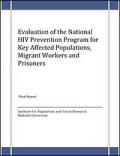
Resource | Publications,
The Institute for Population and Social Research (IPSR) of Mahidol University was selected by the National Committee for the Advancement of AIDS Prevention and the National AIDS Management Center (NAMc) to implement the Evaluation of the National HIV Prevention Program among Key Affected Populations and Prisoners in Thailand during 2010-2013. The second phase of the evaluation spanned the period from October 2011-December 2012 and consisted of an in-depth study of program inputs, processes, and expected outcomes of the program. Among others, the key research questions for the evaluation include: whether interventions are being implemented as planned as an integrated, defined package of HIV prevention services and defined standards of quality; the extent of coverage of the delivery of the HIV prevention package to the target populations; and the results of the delivery of the package of prevention services in terms of the increase in the proportion of the population who know their own sero-status, the reduction of HIV risk behavior, the reduction of STIs, an increased access to ART and opportunistic infection treatment.
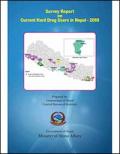
Resource | Publications,
Drug abuse is a worldwide problem that affects millions of people, and Nepal is no exception. Over the last years, growing drug use has been of increasing concern to the society in Nepal. It is mainly the young boys and girls who are engaging in drug use for a variety of reasons and many young Nepalese have already died from drug use. Drug use poses serious challenges as it affects foremost the health and life of the drug user, the social well-being of the family and community.
The primary objective of the survey was to estimate the total number of hard drug users in Nepal and hence to identify pattern and extent of drug use across the country, such as: age, sex, education, age at first drug intake, frequency/duration of drug use, mode of drug use, expenses made on drug and the perception of drug users towards the Government etc.
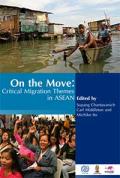
Resource | Publications,
This book explores new concepts and identifies critical themes in migration studies in ASEAN, with a focus on selected emerging trends, namely: various forms and degrees of environmental change and how these changes transform migration; labour, human trafficking and migration; migrant children; and gender. It presents selected papers from two conferences at Chulalongkorn University hosted by the Asian Research Center for Migration (ARCM) and its partners, held to mark International Migrants Day on 18 December in 2011 and 2012.
The conferences emphasized the ongoing importance of recognizing and meeting the challenges of migration in both its long-standing and new forms, and facilitated discussion among policymakers, planners and representatives from national ministries of the Royal Thai Government and across ASEAN, international and national organizations, and nongovernmental organization (NGOs) to explore the range of issues associated with migration conceptually and from experiences on the ground.
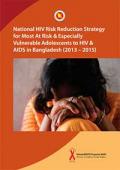
Resource | Publications,
Bangladesh continues to have a low but concentrated AIDS epidemic with national HIV prevalence less than 0.1%. While the level of HIV infection remains generally low in the country, there are considerable vulnerabilities and risk that put children and adolescent at risk of infection. This has become important as the country has a large cohort of children and adolescent population under 18 years of age estimated at 45% of the total population.
The National HIV Risk Reduction Strategy for Most At Risk & Especially Vulnerable Adolescents to HIV & AIDS in Bangladesh (2013 – 2015) was informed by the result of the Mapping and Size Estimation of Most At Risk Adolescents in Bangladesh conducted in 2011 with support from UNICEF. This strategy emphasizes key actions to improve legislation, policy and programmes to reduce risk and protect MARA/EVA in Bangladesh from HIV and AIDS.

Resource | Presentations,
Behavioral sentinel surveillance (BSS) has been conducted by NCHADS to document behavior changes among sentinel groups since 1997. The objectives of the BSS 2013 are:
- To document HIV related risk behaviors among selected sentinel groups
- To tracks trends in risk behaviors among EW and MSM groups
- To explore common practices toward the use of VCT, STI clinics sexual health and other relevant services
- To investigate the attitude and practice on adherence and towards positive prevention among PLHIV
- To evaluate coverage and the outcomes of interventions targeting selected sentinel groups
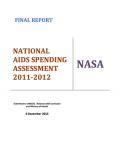
Resource | Publications,
HIV and AIDS are among health issues prioritized in the Millenium Development Goals (MDGs) and require considerable attention from various stakeholders. The Government of Indonesia, along with international partners has been working hard in suppressing the spread of AIDS in the country through various programs. However, more challenges remain, and despite considerable amount of money spent in resources to combat HIV and AIDS in Indonesia, the rate of new cases of HIV continue to persist.
To analyze spending for HIV and AIDS in Indonesia, data was collected from various sources: public, international partners, private.
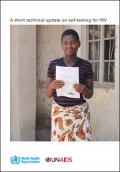
Resource | Tools,
This technical update was prepared in November 2013 in collaboration with key experts, the World Health Organization (WHO) and the Joint United Nations Programme on HIV/AIDS (UNAIDS). Its primary objective is to synthesize experiences, research and policies on HIV self‑testing to inform stakeholders who are considering or already implementing HIV self‑testing.
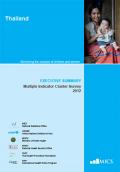
Resource | Publications,
For Thailand 2012 MICS, the National Statistical Office's aims were to obtain updated information on the situation of children and women, including various key indicators that allow countries to monitor progress towards the Millennium Development Goals (MDGs), A World Fit for Children (WFFC) and other internationally agreed upon commitments. The data/information obtained from Thailand 2012 MICS can be used by government organizations in their evidence-based plans and policies regarding children and women.
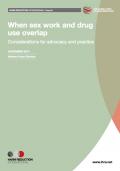
Resource | Publications,
The report examines the multiple and varied contexts within which drug use (including use of alcohol and non-psychoactive substances, including some hormones and image- and performance-enhancing drugs) and sex work overlap. It provides a snapshot of available evidence on the factors that contribute to vulnerability among people who sell sex and use drugs. Drawing on experience from the harm reduction and sex work communities, the report explores implications for practice, highlighting existing programmes that reach people who sell sex and use drugs around the world, and offering practical suggestions on how programmes can better serve this overlapping population. While this broad and complex area cannot be explored in depth within a document of this length, the report aims to draw attention to this often neglected area, and inform policy and programmatic discussions.
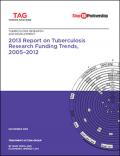
Resource | Publications,
The 2013 Report on Tuberculosis Research Funding Trends: 2005–2012 presents eight years of funding data to characterize annual investments by the world’s leading donors to TB R&D. The report compares current spending in six areas of research with the corresponding R&D funding targets outlined in the Stop TB Partnership’s Global Plan to Stop TB 2011–2015 and shows how these levels of investment have changed over time since 2005, the baseline year. The analysis reveals that in all six research categories, actual spending falls far short of the investments required to develop and introduce new tools to fight TB.
This is also the first year since TAG began reporting that the global funding total has decreased compared with the previous year—falling by $30.4 million. The $627.4 million spent on TB R&D in 2012 represents just 31.4% of the recommended $2 billion annual investment.





